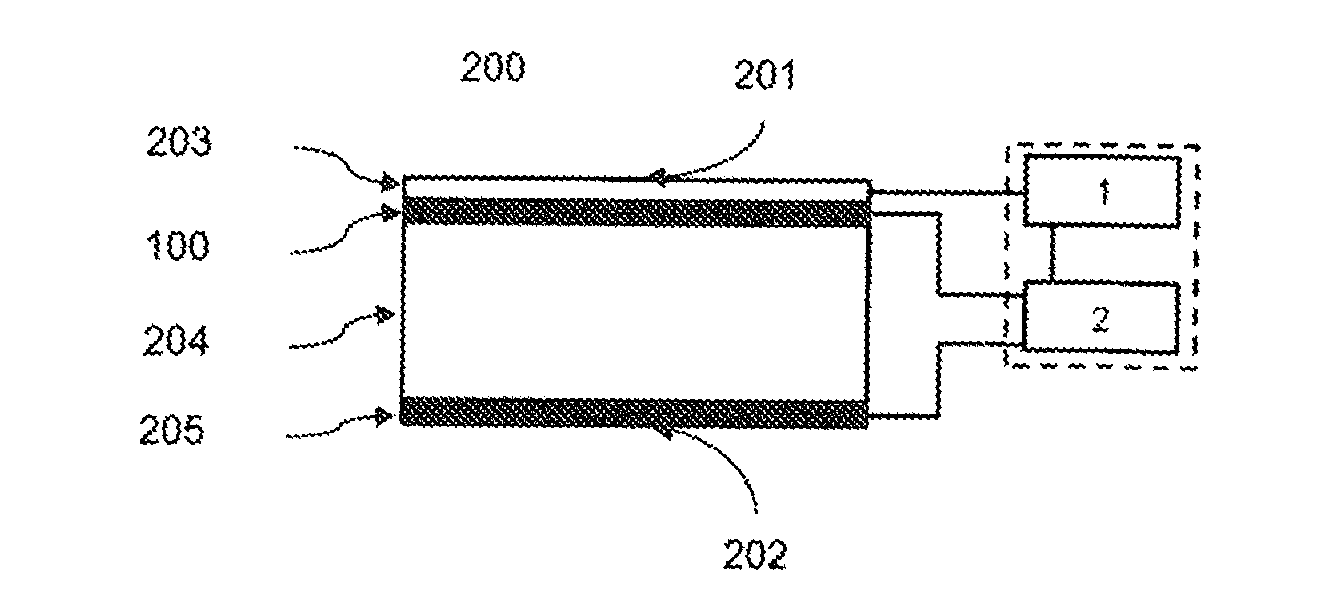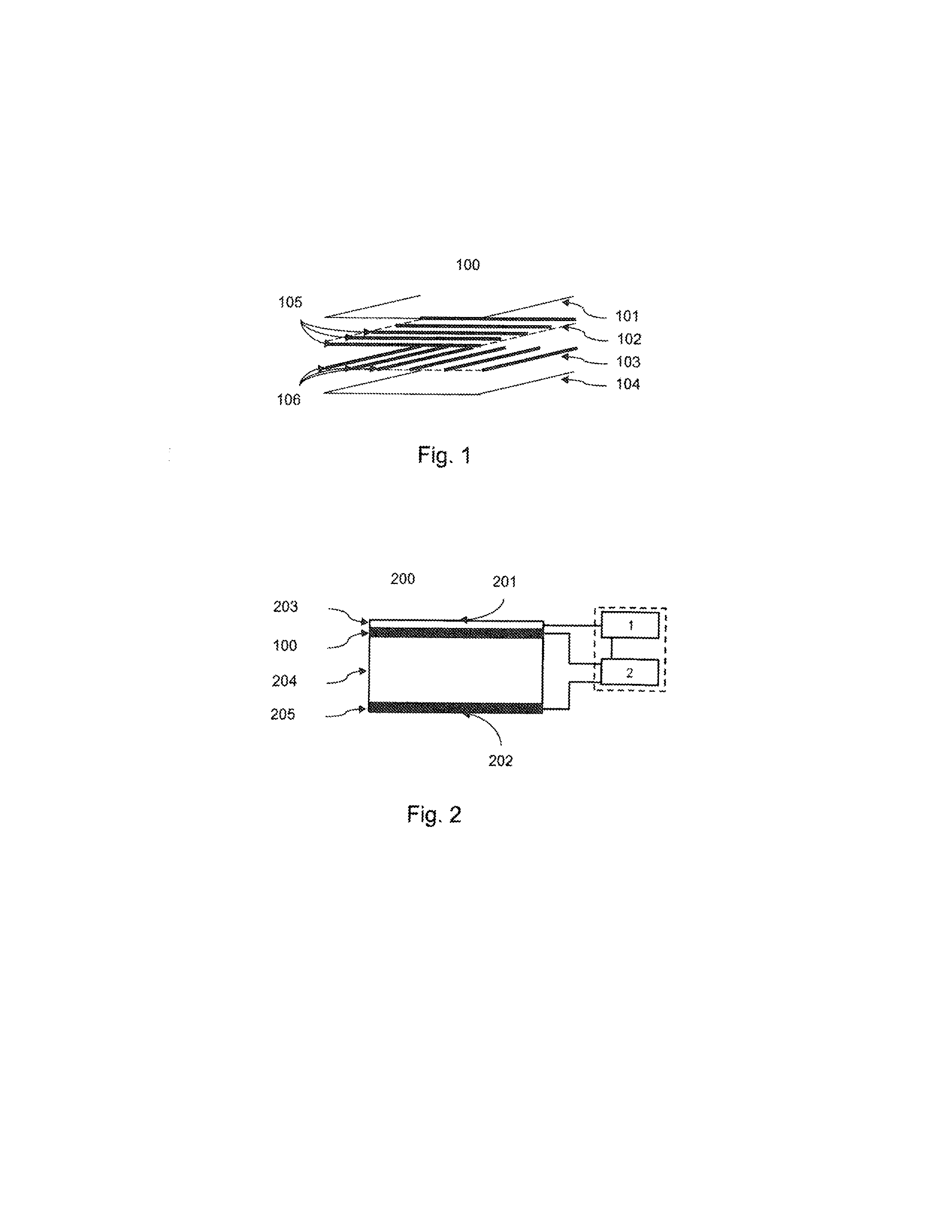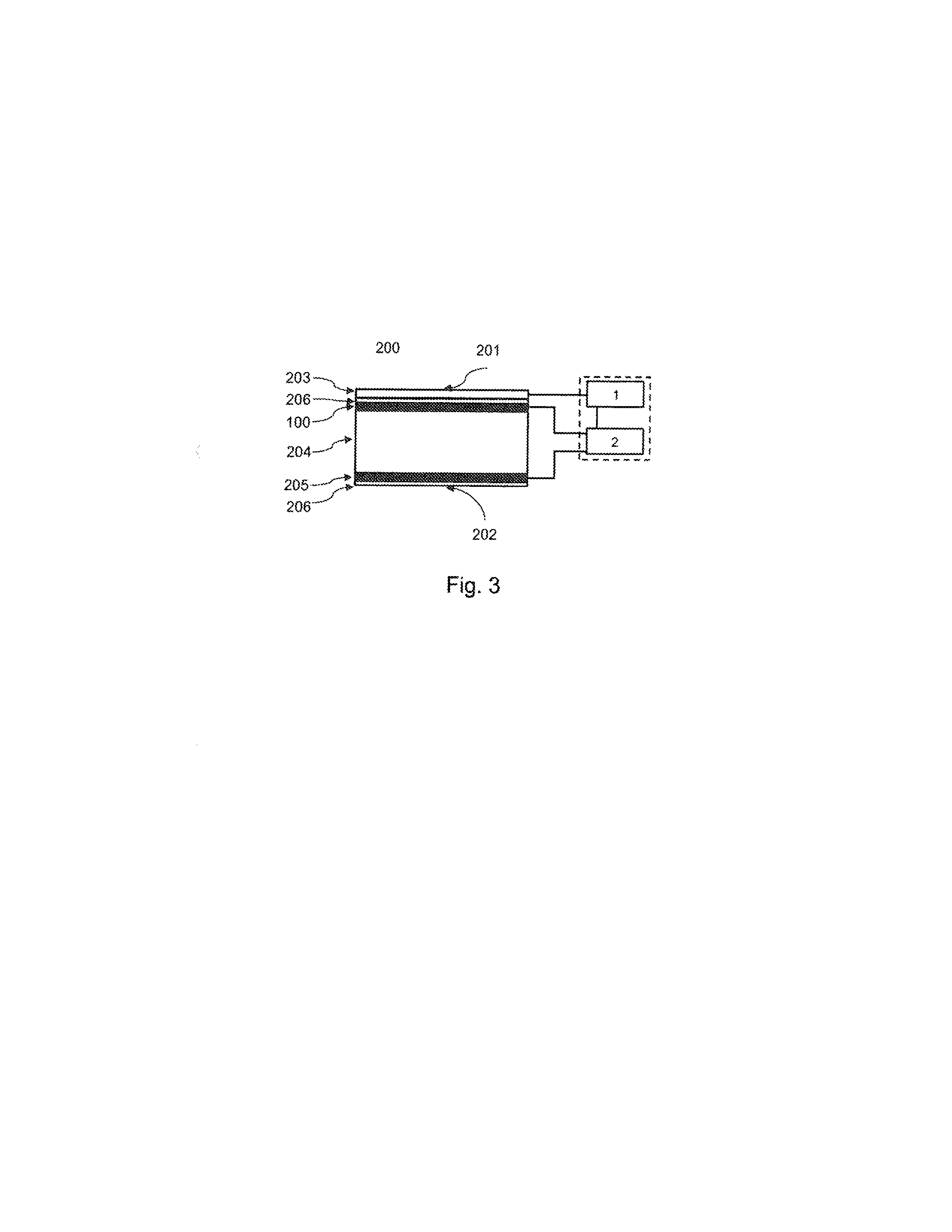Solar generator
a solar generator and generator technology, applied in the field of solar generators, can solve the problems of aging of solar generators, solar generator failure, faulty solar cells or cells, etc., and achieve the effect of better assessing failures
- Summary
- Abstract
- Description
- Claims
- Application Information
AI Technical Summary
Benefits of technology
Problems solved by technology
Method used
Image
Examples
first embodiment
[0045]FIG. 2 is a schematic view of a solar generator according to the present disclosure with a cross-sectional view of a solar panel 200. The flat expansive solar panel 200 with an upper side 201 and an underside or backside 202 has the following layered structure (from top to bottom):[0046]layer of solar cells 203;[0047]first detector layer 100;[0048]structural layer 204; and[0049]second detector layer 205.
[0050]A first evaluation means 1 is connected to the solar cells 207 (as best shown in FIG. 5) and is configured and designed to individually detect a failure of one or several of the solar cells 207. The first evaluation means 1 does not determine the cause of the failure of the solar cell(s) 207. A second evaluation means 2 is connected to the first evaluation means 1 and to the first electrical conductors 105 and the second electrical conductors 106 of the first detector layer 100, as well as to third electrical conductors 208 and fourth electrical conductors 209 of the seco...
second embodiment
[0053]FIG. 3 is a schematic representation of a solar generator. The representation is based on FIG. 2 and differs from FIG. 2 in that a separating layer 206 is arranged on the underside of the solar panels 200 and between the layer of solar cells 203 and the first detector layer 100, respectively. This separating layer 206 preferably comprises an insulating material and further includes a conductive fabric for shielding from electrical fields.
third embodiment
[0054]FIG. 4 is a schematic representation of a solar generator. The representation is based on FIG. 3 and differs from FIG. 3 in that a separating layer 206 is arranged between the first detector layer 100 and the structural layer 204, and between the structural layer 204 and the second detector layer 205, respectively. This separating layer 206 preferably comprises an insulating material and further includes a conductive fabric for shielding from electrical fields.
[0055]FIG. 5 is a partially transparent representation of an upper side 201 of a solar panel 200 in schematic plan view. Visible on the upper side 201 are the solar cells 207 in grid-like arrangement and arranged beneath these solar cells 207 in the solar panel 200 are the first electrical conductor 105 and second electrical conductor 106 of the first detector layer 100. Each of the electrical conductors 105, 106 is connected to the second evaluation unit 2 (not shown). Clearly visible is the association of the first ele...
PUM
 Login to View More
Login to View More Abstract
Description
Claims
Application Information
 Login to View More
Login to View More - R&D
- Intellectual Property
- Life Sciences
- Materials
- Tech Scout
- Unparalleled Data Quality
- Higher Quality Content
- 60% Fewer Hallucinations
Browse by: Latest US Patents, China's latest patents, Technical Efficacy Thesaurus, Application Domain, Technology Topic, Popular Technical Reports.
© 2025 PatSnap. All rights reserved.Legal|Privacy policy|Modern Slavery Act Transparency Statement|Sitemap|About US| Contact US: help@patsnap.com



